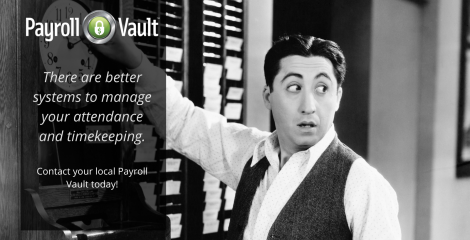How to Track Employee Hours: Resources That Benefit Small Businesses

FEB 01, 2022
Punch cards are definitely a thing of the past. Still, whether your employees are hourly or salaried, tracking hours is an essential tool for any business. Understanding how to track employee hours can help employers make better staffing and scheduling decisions and price services accordingly, among other practical benefits. New technologies and professional payroll services provide businesses with a wealth of information that old school time clocks just can’t touch.
OUT WITH THE OLD SCHOOL
Several challenges existed for businesses that utilized old school time-tracking practices, including:
- A lack of consistency and accountability from employees clocking in and out of work.
- The time investment required to record and track employee hours in order to accurately pay workers.
- Difficulty creating effective and accommodating work schedules.
- Inability to track and sync hourly employee data with revenue and labor costs.
Before deciding how to track employee hours, it is first important to understand why we do it. Different types of businesses have different needs. For instance, restaurants may do well with basic time clock software which can track employee time down to the minute, while administrative or client-focused businesses may require time trackers that can more closely monitor the different types of work being done at any given time, including non-billable hours.

BENEFITS OF TIME-TIME TRACKING TECHNOLOGY
For businesses with hourly employees, tracking time helps you calculate payroll correctly. It ensures that your workers are getting paid for all the work they have done at the correct amount for each pay period.
Understanding how to track employee hours also provides you with a record of how and when your employees worked which you can keep on file and cross-check with labor laws and time off policies. Using these numbers, you can make sure that non-exempt employees are working their allowed number of hours, they’re compensated correctly for overtime, or that they’re taking breaks or time off when they need it.
By tracking employee hours, you will also gain a better understanding of your labor needs. Restaurant owners, for example, can compare sales numbers to labor costs during any given shift and adjust accordingly. Or if your business tracks time by project or client, you can see how labor costs and employee hours stack up against your incoming revenue. Seeing which clients or projects are most profitable, and which require a great deal more time and manpower for lesser rewards will help you make better business decisions.
For small and mid-sized businesses, the responsibility of tracking time for employees using traditional “pen and paper” methods can become overwhelming. Digital platforms and outsourced timekeeping services can tackle a business’s needs with the help of new features that exist to streamline the process.

INCREASED ACCOUNTABILITY
Inaccurate timecards make tracking employee hours less effective and reliable, leading to confusion and improper spending. A range of new capabilities including geofencing, GPS tracking, IP address tracking, and facial and biometric recognition allow employers to hold employees accountable more accurately for their time on the job.
STREAMLINED PAYROLL
The payroll process shouldn’t have to cut into businesses and their employees’ ability to fulfill their ultimate goals and purpose. Outsourced payroll services and technological advancements help businesses integrate with cutting-edge digital timekeeping solutions so that everything can be accomplished more efficiently and accurately without taking time away from the more important tasks at hand. Many of the newer providers can tackle everything from project tracking to payroll reports on demand to save time on manually reviewing time sheets.

SCHEDULE MANAGEMENT
Businesses that know how to track employee hours efficiently can ensure those strategies benefit employees as well, and it begins with scheduling. The right tools and assistance can avoid gaps of coverage, which could put stress on remaining staff. By removing the complexity of the scheduling process, employees can rest assured that their time is being accurately considered for consistency as well as budget.
KEEP TRACK WITH PAYROLL VAULT
Small businesses commonly have unique needs. Understanding your timekeeping options will boost productivity, accountability, and automate your time and attendance processes. Payroll Vault is here to help you identify your needs and find the most effective and innovative solutions for your business to boost productivity and automate time and attendance processes.
Payroll Vault’s team of specialists provide customized, intuitive solutions for small and medium-sized business owners who are ready to step into the future and make the most of their business.
To learn more about outsourcing your timekeeping needs with Payroll Vault, request a quote.

